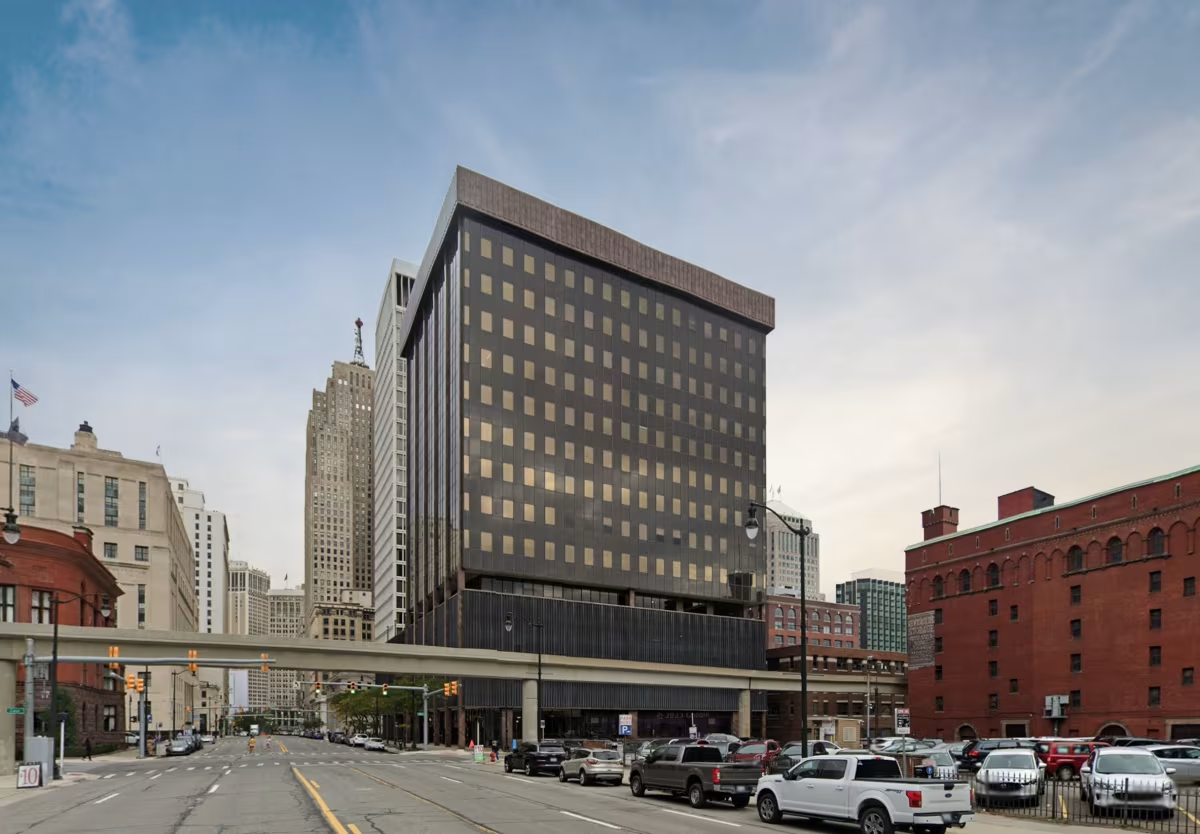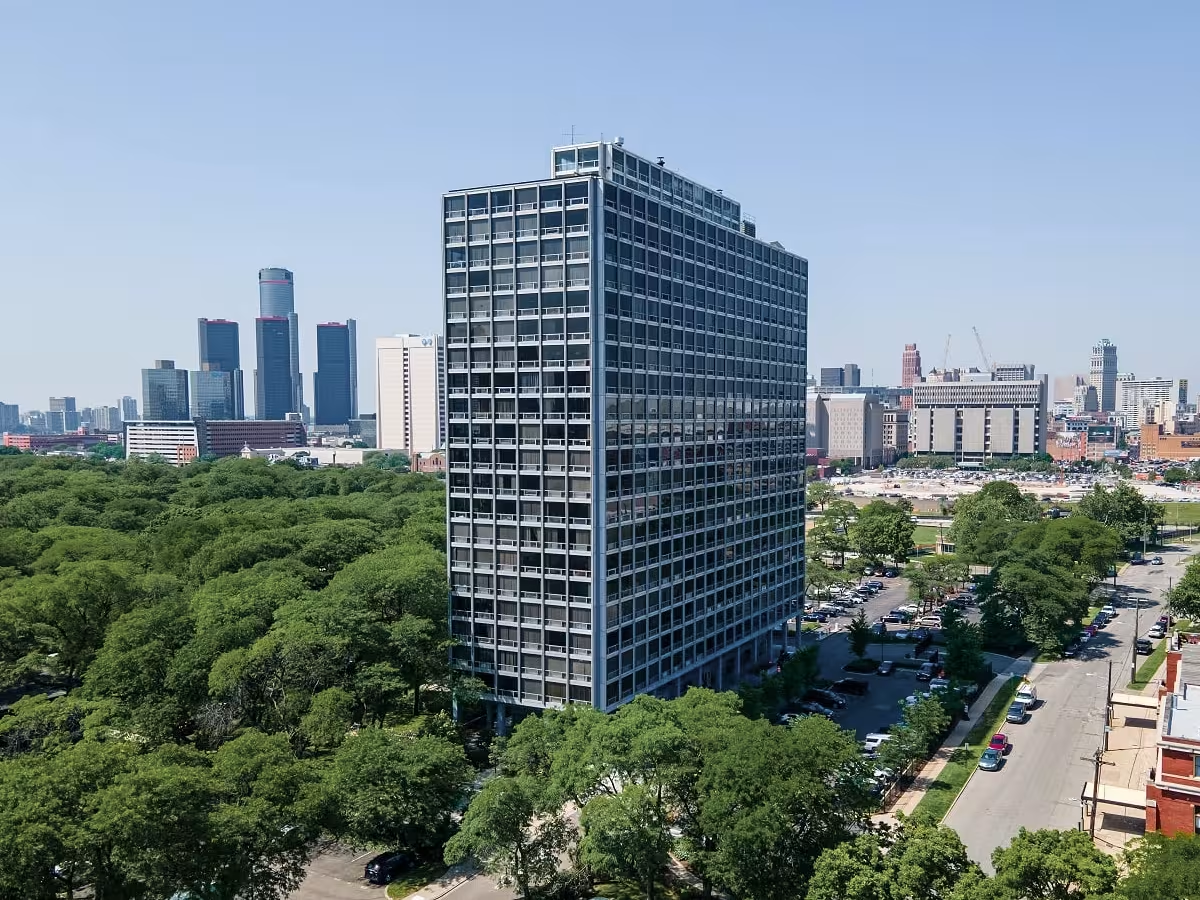Fort Washington Plaza vs Lafayette Pavilion Apartments


Comparing the Fort Washington Plaza and the Lafayette Pavilion Apartments is interesting because they both rise in Detroit, MI, yet they were conceived by two different design teams, Louis G. Redstone & Associates and Mies van der Rohe, and were completed at different points in time. They were finished more than a decade apart.
This contrast within the same city allows us to see how different creative minds interpreted the evolving needs of Detroit across time.
Let's take a closer look!
Height & Size
The Lafayette Pavilion Apartments is clearly the larger tower of the two, both in terms of height and number of floors. It rises to 220ft (67m) with 22 floors above ground, while the Fort Washington Plaza reaches 197ft (60m) with 16 floors above ground.
Of course, each project may have faced different briefs or regulatory constraints, which we don't really know about and could also explain the outcome.
Architectural Style
Both the Fort Washington Plaza and the Lafayette Pavilion Apartments were designed in line with the aesthetic conventions of the International Style style.
At the time, this style was at the height of its popularity. So both Louis G. Redstone & Associates and Mies van der Rohe followed what was in many ways expected of them, producing designs that fit comfortably within contemporary architectural norms, rather than breaking with convention.
Uses
The Fort Washington Plaza is primarily commercial, while the Lafayette Pavilion Apartments is primarily residential.
The Lafayette Pavilion Apartments offers 340 residential units.
The Fort Washington Plaza also provides 524 parking spaces.
Structure & Facade
Both towers share the same structural solution, a Frame system.
A frame structure uses a grid of columns and beams to carry the building's loads. This frees the walls from structural duties, allowing for flexible floor plans and larger windows.
However, when it comes to the facade, both buildings use different approaches. The Fort Washington Plaza uses a Curtain Wall facade, while the Lafayette Pavilion Apartments uses a Window Wall facade.
A Curtain Wall facade like the one seen in the Fort Washington Plaza uses a lightweight glass curtain wall hung from the structure, while a window-wall facade like the one seen in the Lafayette Pavilion Apartments uses panels fitted between floor slabs, leaving slab edges visible.
| Fort Washington Plaza | Lafayette Pavilion Apartments | |
|---|---|---|
| Louis G. Redstone & Associates | Architect | Mies van der Rohe |
| 1969 | Year Completed | 1958 |
| International Style | Architectural Style | International Style |
| Commercial | Current Use | Residential |
| 16 | Floors Above Ground | 22 |
| 60 m | Height (m) | 67 m |
| Frame | Structure Type | Frame |
| Concrete | Vertical Structure Material | Concrete |
| Concrete | Horizontal Structure Material | Concrete |
| Yes | Facade Structural? | No |
| Glass, Concrete | Main Facade Material | Aluminum, Glass |
| MI | State | MI |
| Detroit | City | Detroit |
| 333 West Fort Street | Address | 1 Lafayette Plaisance |